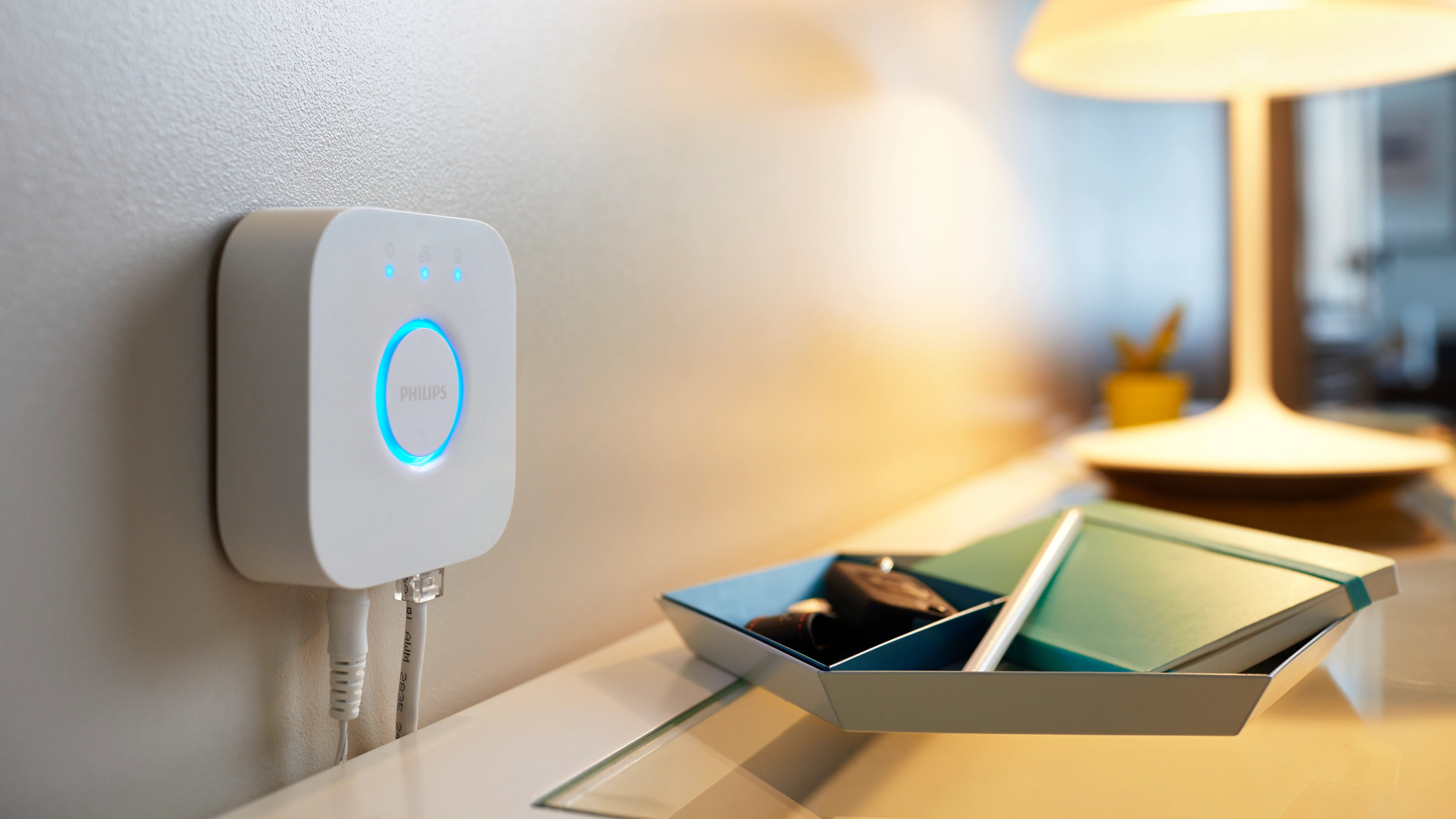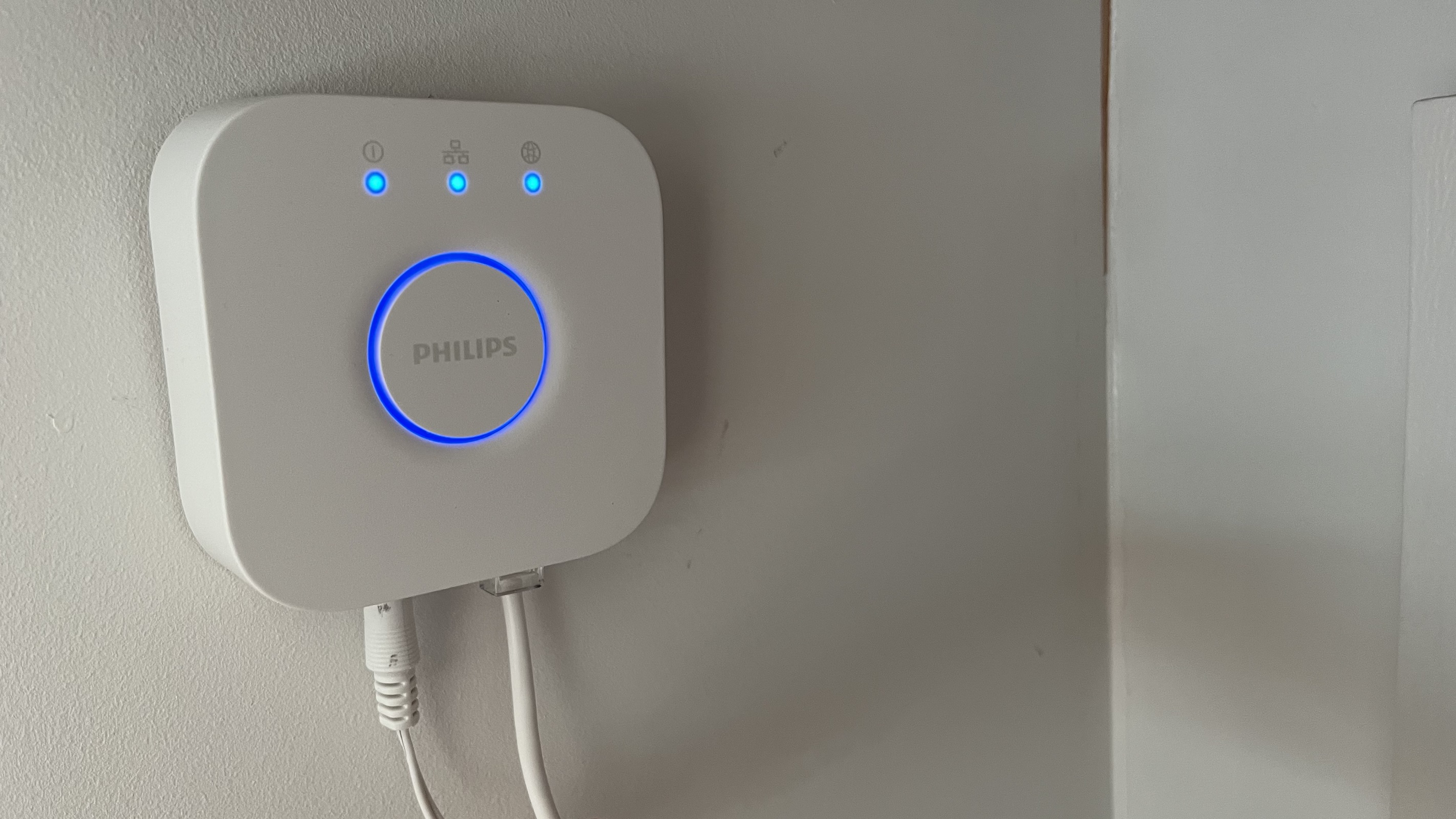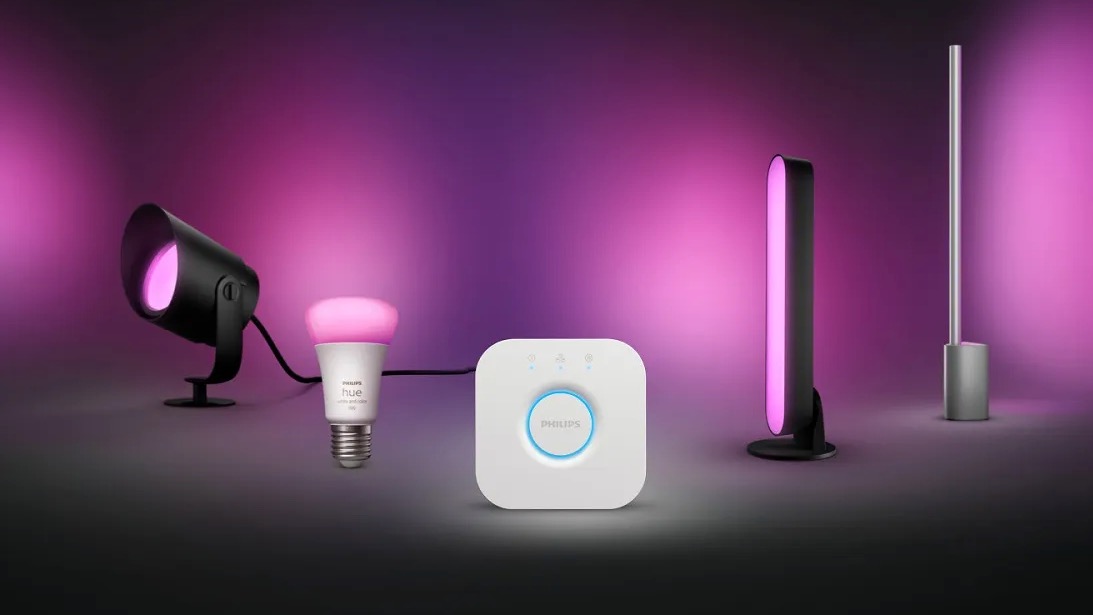Philips Hue Bridge: what is it and how important is it for your Hue smart lights
If you plan to outfit your home with Philips Hue smart lights, then read on

Having been around since 2012, Signify’s Philips Hue is one of the most popular smart light brands today. For a few years after launch, the only way to set up your Hue lights was via a Hue Bridge that could be had as part of a starter pack or purchased separately. Since 2019, however, all Philips Hue bulbs come with Bluetooth support.
So, doesn’t that make the Hue Bridge unnecessary now? Well, yes and no. While it’s technically true that the Bluetooth-enabled Hue lights don’t need the Bridge for initial setup and subsequent control (there is a separate Hue app for the Bluetooth lights), there are a few features that will only become available if you use the Bridge. Moreover, the number of lights you can control via the Bridge is much higher, making it a worthwhile investment if you plan to convert all your home’s lights to Philips Hue smart ones.
Setting up a Philips Hue Bridge is easy, so in this article we’ll walk you through how it could be useful and what features it helps unlock. Finally, we’ll help answer the most important question of all – is the Philips Hue Bridge worth buying? Let’s start at the very beginning though.
What is a Philips Hue Bridge?
The Hue Bridge is a communication hub between your Philips Hue smart bulbs (also Hue plugs and switches) and the devices you use to control them (typically your phone or tablet). While it connects to these devices wirelessly via your home’s Wi-Fi, the Bridge itself needs to be plugged into a power socket and connected to your router via an Ethernet cable.
Once connected to your home’s network, the Bridge becomes a control center, allowing you to not just switch your lights on and off, but unlock the full suite of features available via the Hue app. Your lights and the Bridge essentially create a mesh network that allows them to communicate with each other and, subsequently, makes it easy to keep adding more lights by just ‘finding’ them via the Hue app.
While the Bridge works with both Bluetooth-enabled bulbs and the older ones, it is a necessity if you want to control outdoor Hue lights as they don’t have Bluetooth support.

What features does the Philips Hue Bridge unlock?
Controlling lights remotely
If you’re using Bluetooth to control your lights, you’re going to need to be within 10m of the bulbs. But what happens if you’ve forgotten to switch off a light when you left home? Having your Hue bulbs connected to the Bridge will give you remote access to your lights so you can switch them on or off from anywhere that has an internet connection (not just your home’s network).
Sign up for breaking news, reviews, opinion, top tech deals, and more.
Voice control
Whether you prefer communicating via Siri, Google Assistant or Alexa, you can use voice commands for some controls. For example, you can switch your lights on or off, or dim them to a specific moody brightness. You can change scenes with a voice command or control lights in a single room as you see fit.
Set up automations and schedules
Using the Hue app, you can set up daily or weekly schedules of when your lights turn on or off, at what setting they need to switch on or which room should have its lights on and when. You can even set up automations like having some or all of your Hue lights to come on when you’re getting home, or set them to turn off when you leave.
Matter support
Announced during IFA 2023, the second-generation Philips Hue Bridge will have Matter integration via a firmware update rolling out in September. So, as long as you are using the Hue Bridge, your lights and accessories will be compatible with other Matter-enabled devices from any other manufacturer.
Third-party integration
The Hue Bridge can support several third-party platforms that allows you to link your Philips Hue devices with other smart home setups. For example, you can sync your lights to your Samsung TV to reflect what’s happening on the screen, or connect to Spotify. You can also integrate other smart home platforms like IFTTT, SmartThings and more. This might sound like it makes Matter support redundant – which is true for the most part – but it will make the communication between devices a lot easier.
Do you need a Philips Hue Bridge?
The Hue Bridge offers some significant advantages over Bluetooth connectivity as listed below:
- You can control your lights remotely as long as you’re connected to the internet
- You can control up to 50 Hue lights compared to just 10 via Bluetooth
- Using Zigbee to communicate with your lights, plugs and switches, the Hue Bridge makes it possible for your devices to react almost instantly, and provides a more stable connection compare to Bluetooth
- Zigbee also provides a control range of up to 290m outdoors and 25m indoors, while Bluetooth only gives you up 10m of range (meaning you may not be able to control all your lights if you live in a large family home)
- Once your Hue Bridge is set up, you don’t need to worry about it even if you change internet providers – all your information is saved locally on the device
- You can add another Hue Bridge to your account seamlessly via the app if you need to control more than 50 Hue devices, although this could cause congestion as it creates two Zigbee mesh networks (placing the Bridges close to the lights they’re paired with will help solve this issue)

Is the Philips Hue Bridge worth buying?
The only advantages Bluetooth connectivity gives you is that it makes it cheaper to set up a Hue smart light system as it eliminates the need to buy the Bridge separately. If you don’t plan to expand your Hue lights beyond 10, don’t plan to add other Hue accessories to this setup and just need basic control, then you don’t need the Hue Bridge.
However, as we’ve listed above, the Hue Bridge gives you plenty of options to control your lights and Hue accessories. Think of it as future-proofing your smart home – you can start with a bulb or two, then expand to cover your whole home, add in plugs, switches, motion sensors and outdoor Hue lamps.
And with Matter integration, it will be a lot easier to connect other supported smart devices than using third-party integration. That said, the number of Matter-enabled devices is quite low at present, so the third-party platforms are definitely a pro in our books – you win either way.
Admittedly Philips Hue is an expensive smart system, but considering all the features you get, it’s worth it. And if you do plan to expand your Hue lighting system in future, an additional $59.99 / £49.99 / AU$99.95 for the second-generation Hue Bridge is worth it.
You might also like

While she's happiest with a camera in her hand, Sharmishta's main priority is being TechRadar's APAC Managing Editor, looking after the day-to-day functioning of the Australian, New Zealand and Singapore editions of the site, steering everything from news and reviews to ecommerce content like deals and coupon codes. While she loves reviewing cameras and lenses when she can, she's also an avid reader and has become quite the expert on ereaders and E Ink writing tablets, having appeared on Singaporean radio to talk about these underrated devices. Other than her duties at TechRadar, she's also the Managing Editor of the Australian edition of Digital Camera World, and writes for Tom's Guide and T3.